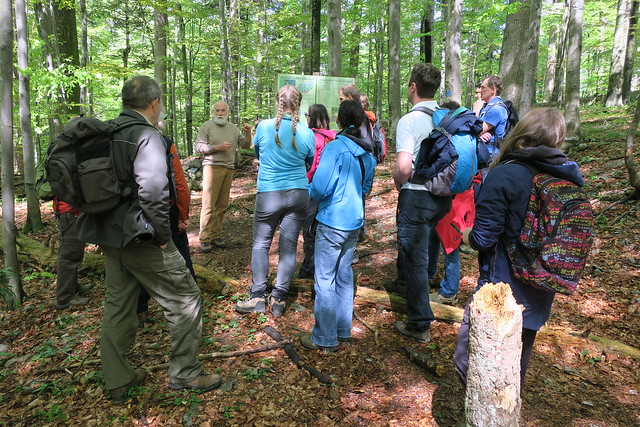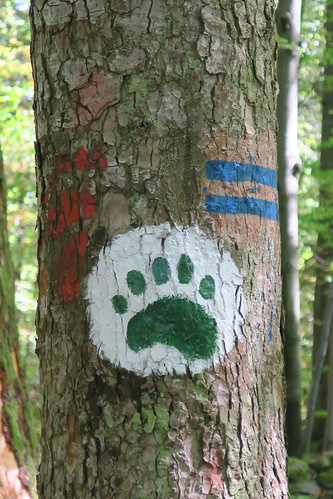Workshop about presenting old-growth forests to children
12 – 14 May 2017, Environmental Scout Centre Kočevski Rog, Slovenia
Why is it necessary that children experience old-growth forests? Is this logistically possible? Are there already existing good forest pedagogy approaches or we should develop new ones? Are already existing educational trails sufficient or new ones should be established?
All these questions were tackled by a group of avid scout leaders, foresters, forest pedagogues, researchers and other participants of the workshop. After two and a half days of great excursions, lectures, debating and practical forest pedagogy activities we concluded that children, parents, and teachers should be acquainted to the remnants of primeval nature, that still exist in Slovenia and are part of natural and cultural heritage. Primeval nature is rare and endangered, but in Slovenia can be found mostly in the remnants of old-growth forest.
A group of 23 scout leaders from the Slovenian Catholic Girl Guides and Boy Scouts Association, forest pedagogues from Slovenia Forest Service and other pedagogues joined the LIFEGENMON project team for a workshop about how to introduce old-growth forests to children.
- Tone Lesnik presented the Environmental Scout Centre Kočevski Rog and ProSilva Europe aims and activities.
- Tomaž Hartman from Slovenia Forest Service presented a walking trail Roška pešpot on the border of the old-growth forest reserve Rajhenavski Rog and one of the biggest fir trees “Kraljica Roga” (height of 51,5 m).
- Together with Katja Konečnik and Andrej Breznikar (both from Slovenia Forest Service) they presented forest pedagogy activities in the Kočevje region, dedicated to promote forests to children.
- Gregor Torkar from Faculty of Education, University of Ljubljana, presented recent research in the experiencing nature by children in relation to their emotional and cognitive development stages. He also shared his vast practical experiences in the development of activities for children to rise natural heritage awareness.
- Urša Vilhar presented the LIFEGENMON project, the importance of forest genetic monitoring for biological diversity conservation which supports the adaptability and resilience of forest ecosystems to climate changes, and with practical exercise also the Handbook for learning and play in the forest.
- Natalija Györek from the Forest Pedagogy Institute presented the Slovenian network of forest kindergartens and schools and their seminars for teachers and other pedagogues, interested in forest pedagogy. In 2015 the network also announced a call for good practice examples for teachers about how to present old-growth forests to children of different ages and the results were three very interesting examples. However, low response by teachers to this call is indicating lack of experience and information about the old-growth forests in general.
To experience old-growth forests as efficiently and memorable as possible, experience-based learning activities will be developed and tested by different groups (e.g. scouts, Forest of experiments visitors, etc.), using the principles of Flow learning and hopefully collected in a new handbook.
The contents of this blog are authored by dr. Urša Vilhar and edited by Laura Žižek Kulovec. Both are researchers at the Slovenian Forestry Institute, responsible for the communication and dissemination activities of the LIFEGENMON project.














 Saving...
Saving...
Leave a Comment